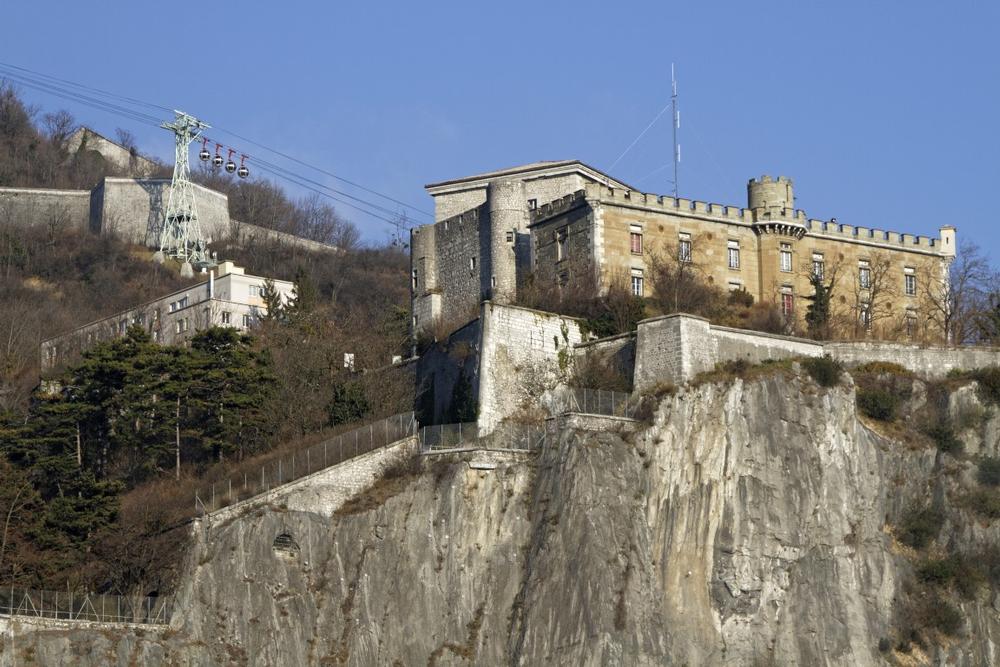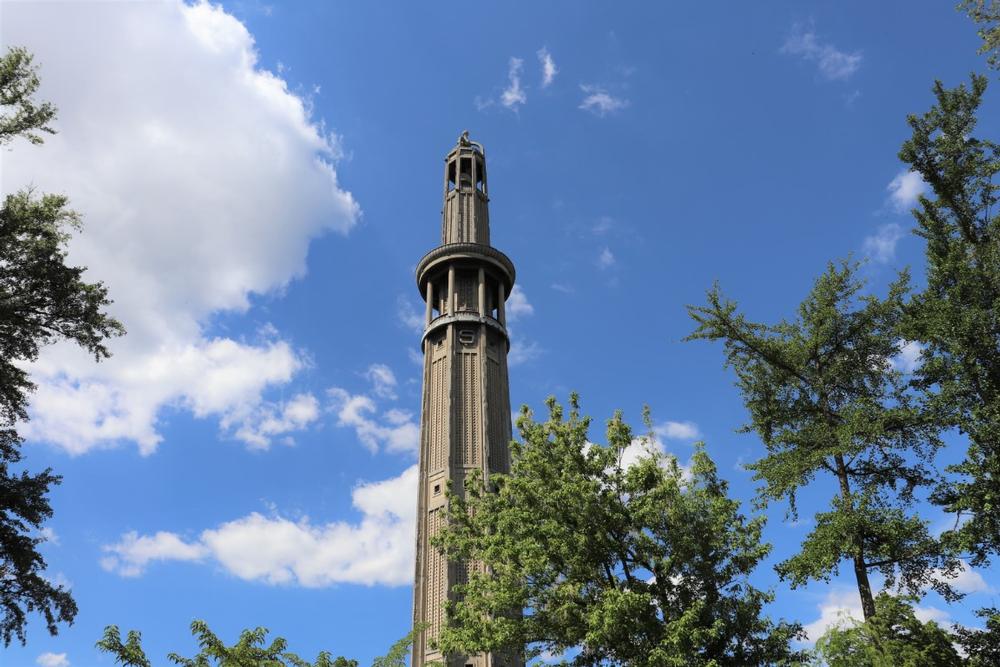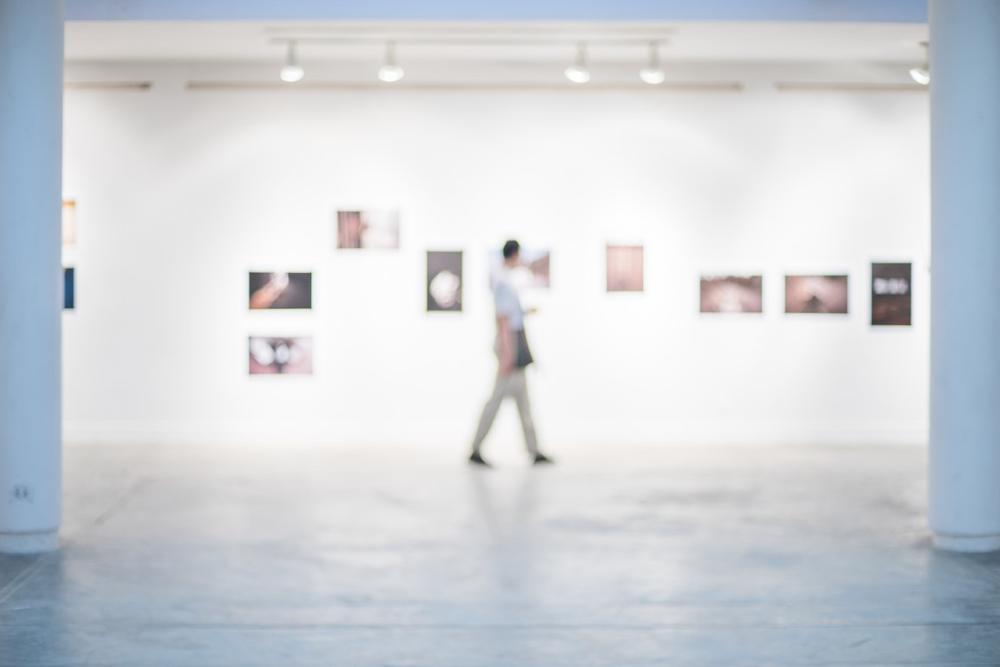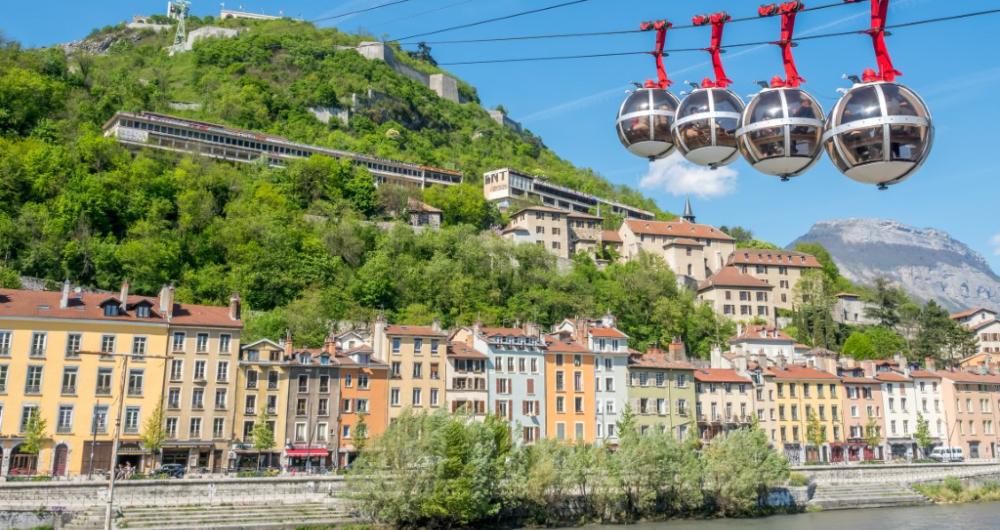-
Where is Grenoble located?
- Grenoble is located in the southeastern region of France and has a 2,000-year-old history.
-
Why is Grenoble called the ‘Capital of the Alps’?
- It’s known as the ‘Capital of the Alps’ because of its close proximity to the French Alps.
-
What natural features surround Grenoble?
- This city is home to the Isère River and is surrounded by several national parks.
-
What cultural attractions does Grenoble offer?
- Besides its scenic nature, Grenoble is also home to history museums, endless sidewalk cafes, boutique shops, and art galleries.
1.La Bastille

© Pierre-Jean DURIEU/stock.adobe.com
La Bastille is the name of a military fortress that’s been part of Grenoble since the 19th century. It sits on a hill about 1,500 feet above sea level and overlooks the entire city and the surrounding mountains. Visitors can reach La Bastille in seven minutes when riding the famous Grenoble Cable Car. This tourist site also has contemporary and modern art museums, recreational activities, year-round cultural and social events, along with plenty of dining options to choose from. Furthermore, La Bastille is the site of the annual bike race called La Prise De La Bastille.
38000 Grenoble, Phone: +33-4-76-44-33-65
2.Parc Paul Mistral

© ERIC/stock.adobe.com
Parc Paul Mistral is the French name for Paul Mistral Park. This urban park opened in 1925 and spans across 67 acres. Formerly a military ground, the park is now home to city hall and several sports facilities. Inside Paul Mistral Park is Perret Tower, the last remaining relic of the International Exhibition of Hydropower and Tourism. Other features of the park include sculptures of Apostu, Guasagnucci, and Rousil, which were specifically built for the 1967's Symposium. Visitors can also discover the park’s pond, a small river, a playground, and a little train. The summer months draw many people for festivals and concerns.
Boulevard Jean Pain, 38000 Grenoble, Phone: +33-4-76-76-36-36
3.The cable car

© karnizz/stock.adobe.com
The Grenoble cable car
was built during 1934 and was the first urban cable car in the city. It offers a birds-eye view of the city while taking passengers to the fortress of La Bastille. Originally it only had two 12-sided cable cars big enough to hold 15 people. One car headed up the mountain while the other simultaneously headed down. In 1951, these two cable cars got replaced with glass boxes that could accommodate 21 people. Then in 1976, a lower station was added with spherical, or ‘bubble’ shaped cabins. Today, there are two sets of five ‘ bubbles’ that carry up to six people.
38000 Grenoble, Phone: +33-4-76-42-41-41
4.Le Magasin National Centre of Contemporary Art

© Le Magasin National Centre of Contemporary Art
Le Magasin National Centre of Contemporary Art
, or Le Magasin for short, was founded in 1986. It’s situated inside of an industrial hall, that was built in preparation for the 1900 World Fair held in Paris. Le Magasin displays mostly contemporary art. And several times throughout the year, the centre features a new solo show or collective exhibition with the help of the selected artists. Le Magasin is divided into two main areas, the first one is known as the ‘Street’ and showcases large art pieces. The second space is smaller and has intimate exhibit galleries.
8 Espl. Andry Farcy, 38000 Grenoble, Phone: +33-4-76-21-95-84
5.Archaeological Museum of Saint-Laurent

© kiiro_iro/stock.adobe.com
The Archaeological Museum of Saint-Laurent
is located inside the former Saint-Laurent parish church. Records show that it was one of the first documented Historical Monuments of France. It’s uniquely known for its Merovingian crypt, which is representative of the art and architecture of the early Middle Ages. Visiting this museum gives guests the rare honor of witnessing two thousand years worth of history under one roof. Excavations took place over the 30 year period from 1978 to 2008 and uncovered much of this history. Some of the archaeological remains range from mausoleums to artifacts from the origins of Christianity.
Place Saint-Laurent, 38000 Grenoble, Phone: +33-4-76-44-78-68
6.Musee de l’Ancien Eveche

© Musée de l’Ancien Évêché
In English, Musee de l’Ancien Eveche translates to the Museum of the Former Bishopric. It was once the Bishop’s Palace and so it’s now a protected historical monument. The museum is also a dedication to the Isère heritage. Inside, guests will find a permanent exhibit called ‘Isère through History’ that includes paintings, historical, and archeological pieces that relate to the pre-history and current day history of Isère. In addition, the Museum of the Former Bishopric celebrates the work of local artists by presenting several temporary exhibitions throughout the year. Finally, visitors can enjoy a public garden in front of the museum.
2 Rue Très Cloîtres, 38000 Grenoble, Phone: +33-4-76-03-15-25
7.Grenoble’s Natural History Museum

© macknimal/stock.adobe.com
Grenoble’s Natural History Museum houses large collections of fossils, minerals, and taxidermied animals. In fact, these collections are some of the biggest in France. The Museum has six different rooms to visit including the Room of the Living Mountain, the Crystal Symphonie Room, the Atlas Room, the Birth of the Alps, the Alpine Mineralogical Sites, and finally a room called ‘In Earth's own words’. Each of these rooms give guests an up close and personal experience with the natural world. Many of these rooms include interactive elements for children and adults alike. Finally, the museum has nearly five acres of botanical gardens to explore.
1 Rue Dolomieu, 38000 Grenoble, Phone: +33-4-76-44-05-35
8.The Sassenage Cisterns

© stock.adobe.com
The Sassenage Cisterns, or ‘les cuves’ is an underground river located outside of the city of Grenoble. The cisterns were formed and shaped over a million years ago by the water than runs through it. Tour guides take travelers down to the majestic underground world where they are quite literally in the center of the earth. The sounds of the flowing river can be heard while the natural wonders of the cave capture the eye. The Sassenage Cisterns opened to visitors in 1947, and over the years it became more accessible and now has over one kilometer of walking paths.
Place Louis Reverdy, 38360 Sassenage, Phone: +33-4-76-27-55-37
| Best Time to Visit |
Places to Stay |
Tips for Visiting |
| Spring (March-May) – Mild temperatures and blooming landscapes, perfect for sightseeing and outdoor activities. |
Okko Hotels Grenoble Jardin Hoche – A modern and stylish stay in the city center. |
Visit Parc Paul Mistral – A beautiful green space for walks and relaxation. |
| Summer (June-August) – Warm and lively, ideal for hiking, cultural events, and exploring the Alps. |
Grand Hôtel Grenoble Centre – A luxurious hotel with great city views. |
Take the Bastille Cable Car – Enjoy panoramic views of the city and surrounding mountains. |
| Fall (September-November) – Crisp air and stunning autumn foliage, perfect for scenic drives and museum visits. |
Le Grand Hôtel de Paris – A charming hotel with historic elegance. |
Explore the Musée de Grenoble – Discover impressive art collections from ancient to modern times. |
| Winter (December-February) – Cold and snowy, great for skiing and enjoying festive markets. |
Park Hôtel Grenoble - MGallery – A cozy and sophisticated winter retreat. |
Go skiing in the French Alps – Nearby resorts like Chamrousse and Les 7 Laux offer fantastic slopes. |
Plan Your Trip
Table of Contents:










